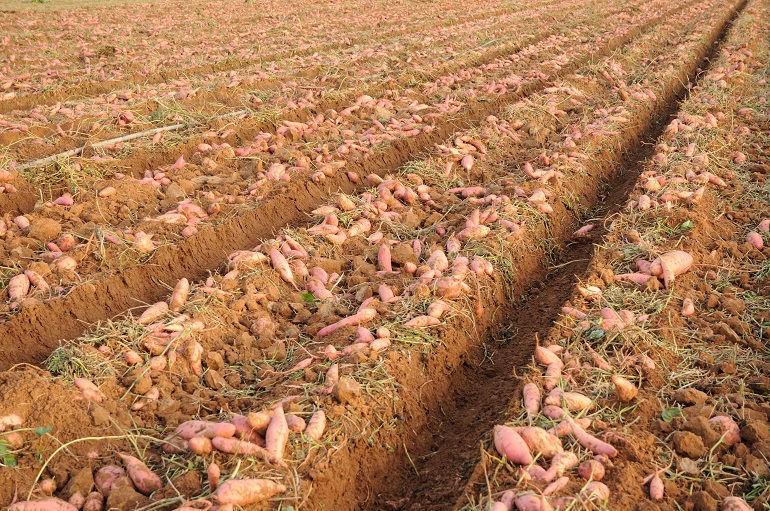How to Grow Sweet Potatoes for Profit

This post is also available in:
This post is also available in:
![]() Español (Spanish)
Español (Spanish) ![]() Français (French)
Français (French) ![]() Deutsch (German)
Deutsch (German) ![]() हिन्दी (Hindi)
हिन्दी (Hindi) ![]() Ελληνικά (Greek)
Ελληνικά (Greek)
Growing sweet potatoes –if done rationally and on a scalable basis- can be a good source of income. In a few words, sweet potato is a perennial plant, but growers, in most cases, treat it as an annual.
Sweet potatoes are tropical plants. This means they thrive in hot and moist areas without any danger of frost. The optimum temperatures for sweet potato cultivation are between 21-29 °C (70-84 °F), and RH levels close to 80-85%. The lowest tolerant temperature is 12 °C (54 °F). Cold weather during the growth period will inhibit plant growth. It is nearly impossible for shocked plants to recover and give an acceptable yield.
First, it is crucial to decide on the growing method as well as the varieties of sweet potatoes that thrive in your area. There are two methods to grow sweet potatoes: Growing from purchased slips or growing from produced slips.
Most commercial growers start the crop from vine cuttings in an indoor protected environment. They prepare the field as they wait for the young slips to grow and be ready for transplanting (usually 1-2 months).
They till the land, and they remove any previous cultivation remains. Occasionally they place a black plastic film through the rows. The black plastic film helps the soil become warmer and controls weeds. They also design and set up the drip irrigation system. Time from Planting to Harvesting depends on the variety, climate conditions, and the age of the slips. When they are ready for transplanting, they make hills or raised mounds 30-60 cm (12-23 in) high and 40 cm (16 in) wide to keep the developing roots covered under the hills. Usually, the distance between the hills is around 60-90 cm (2-3 ft), and the slips are planted at a 30-40º angle.
Fertilization, Drip Irrigation, and weed management are applied in most cases. In general, sweet potatoes need 750-2,000 mm of water annually. Farmers stop irrigating 2-3 weeks before harvesting to prevent the rotting of the sweet potatoes. The plants need around 60-120 kg of nitrogen (N), 120 kg of potassium (K), and 34-130 kg of P per hectare (53-107, 107, and 30-120 lb per acre, respectively).
Most commercial sweet potato varieties can be harvested 90-130 days after transplanting. Producers manually harvest sweet potatoes using mechanical aids for foliage cutting and vein removal. After harvesting, sweet potatoes are best to be cured to expand their storage life and preserve their quality. Growers plow and destroy the crop residues. They may also rotate the crop (with cabbage, corn, legumes, and others) to control diseases and prevent soil from depleting.
For more detailed in information, we suggest that you read the following articles:
Sweet Potato cultivation guide:
Fast Facts about Sweet Potatoes
Sweet Potato Plant Information and Variety Selection
Sweet Potato Nutrition and Health Benefits
How to Grow Sweet Potatoes in Your Backyard
How to Grow Sweet Potatoes for Profit
How to Produce Sweet Potato Slips
Sweet Potato Soil Requirements, Soil Preparation, and Planting
Sweet Potato Water Requirements and Irrigation Systems
Sweet Potato Fertilization Requirements









































































